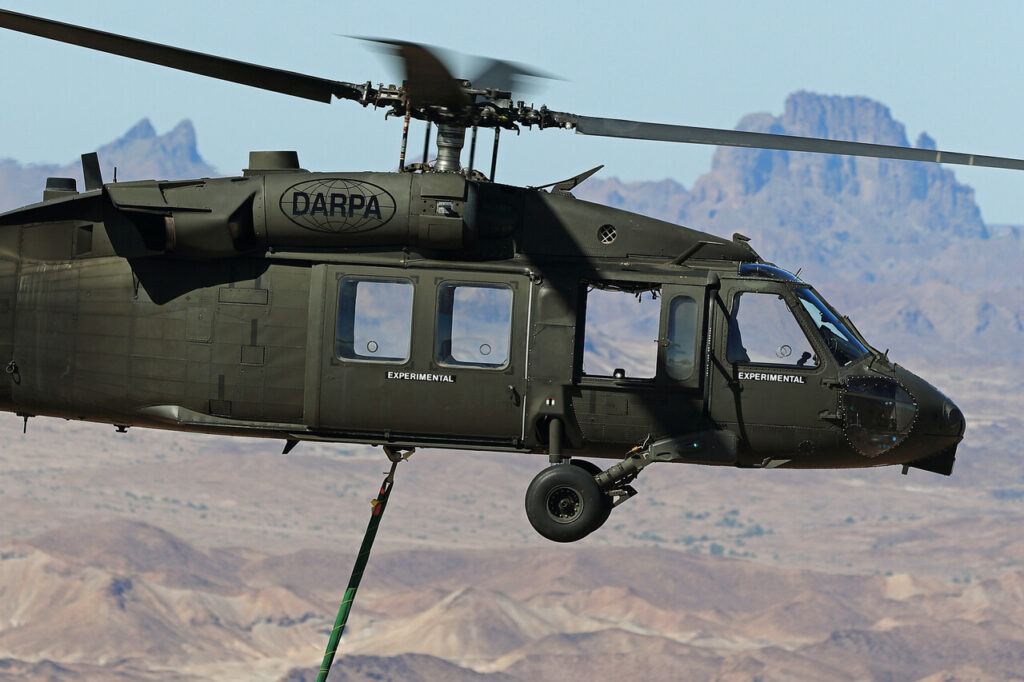Rain, an innovative aerial wildfire containment technology company, has joined forces with Sikorsky, a Lockheed Martin company, to explore a groundbreaking collaboration for aerial firefighting operations.
This partnership aims to harness Sikorsky’s Matrix autonomy suite alongside Rain’s wildfire mission autonomy system, creating a powerful synergy that could revolutionize the way we combat wildfires.
Uncrewed Helicopters
At the recent UP.Summit, Rain and Sikorsky unveiled their ambitious plan: deploying uncrewed helicopters within minutes of detecting wildfires.
This collaborative effort seeks to demonstrate how Sikorsky’s Matrix autonomy suite, when combined with Rain’s early response capability, can swiftly mobilize uncrewed Black Hawk or Firehawk helicopters to suppress wildfires in their early stages, all without risking human lives.
Rain’s CEO, Maxwell Brodie, spoke positively about this partnership, stating,
“Combining Sikorsky’s demonstrated mature vehicle autonomy system with Rain’s early response capability will show how an uncrewed Black Hawk or Firehawk helicopter can quickly take off, fly to a suspected ignition, and drop water to suppress a wildfire in its incipient stage with no human onboard.”
[monsterinsights_popular_posts_inline]
He further added, “Ultimately, Rain envisions equipping fire agencies with the capability to strategically position a future fleet of firefighting aircraft capable of receiving and carrying out mission commands.”
Aerial Firefighting – Rapid Response
The heart of this collaboration lies in the utilization of Rain’s wildfire mission autonomy system to dispatch mission commands to Sikorsky’s optionally piloted Black Hawk helicopter.
With no crew onboard, this approach promises the fastest possible response time for aerial firefighting. According to Brodie, research indicates that even a mere 15-minute reduction in wildfire response times could generate substantial economic benefits, ranging from $3.5 to $8.2 billion annually for the state of California alone.
Sikorsky’s Matrix System
Sikorsky’s Matrix system, developed over more than a dozen years by Sikorsky Innovations, is the linchpin of this collaboration.
This advanced engineering group within Sikorsky has created a platform-agnostic software and hardware suite, complete with sensors, designed to ensure the safe and reliable operation of unmanned or minimally crewed aircraft in challenging terrains, including low-level and obstacle-rich environments.
One standout feature of the Matrix system is its ability to execute a full mission plan independently. It considers various factors such as mission objectives, aircraft performance, obstacles, weather conditions, and topography.
This system is seamlessly integrated with the aircraft’s flight controls, enabling high levels of autonomy in all environmental conditions.
Igor Cherepinsky, the director of Sikorsky Innovations, explains, “Matrix is just one example, our predictive Firefighting Intelligence capabilities being another, of how Lockheed Martin is integrating 21st-century security technology to help first responders fight wildfires faster and more effectively.”
Matrix has undergone rigorous testing on ten different rotary- and fixed-wing aircraft and can be applied to both existing and new build applications, making it a versatile solution for various firefighting needs.
Rain’s Role in the Equation
Rain complements this technology marvel with its wildfire mission autonomy system. This system collaborates with early wildfire detection networks, enabling the rapid dispatch of autonomous aircraft.
Once in the air, Rain’s technology goes to work, identifying and locating wildfires, developing a suppression strategy, and planning the flight path and drop timing to ensure accurate delivery of suppressant materials.
Throughout the operation, the wildfire mission autonomy system shares critical intelligence and plans with firefighters on the ground, enhancing situational awareness and ensuring mission safety and coordination.
This seamless collaboration between technology and human expertise is pivotal in managing wildfire crises effectively.
A Future Potential
Rain and Sikorsky’s collaborative effort is set to demonstrate the immense potential of autonomous aerial firefighting capabilities. The ability to pre-position uncrewed helicopters in remote, high-risk locations could be a game-changer for fire agencies.
Operating around the clock, these integrated solutions would empower fire agencies to respond swiftly to ignitions in challenging terrains, providing them with invaluable tools to prevent catastrophic wildfires.

Click the banner to subscribe to our weekly newsleter.









